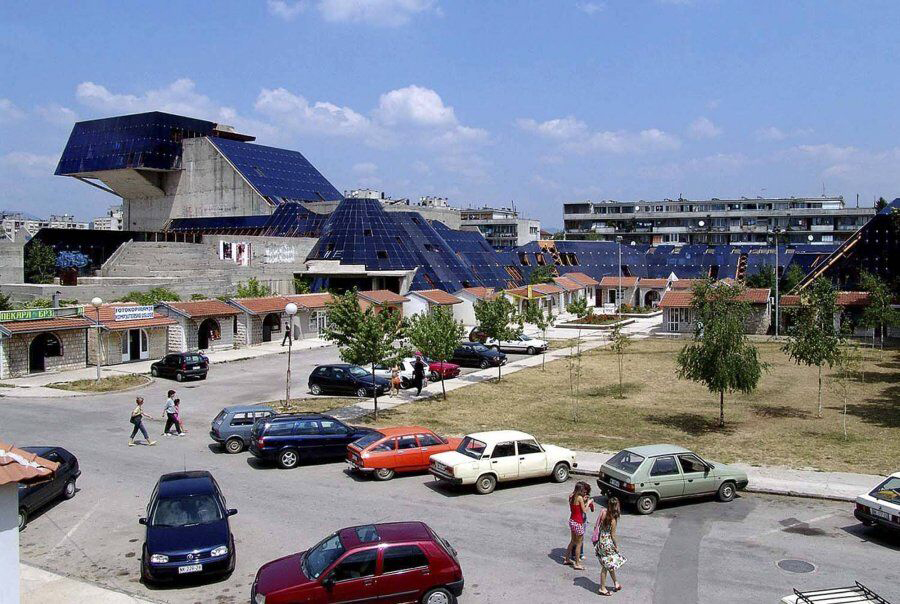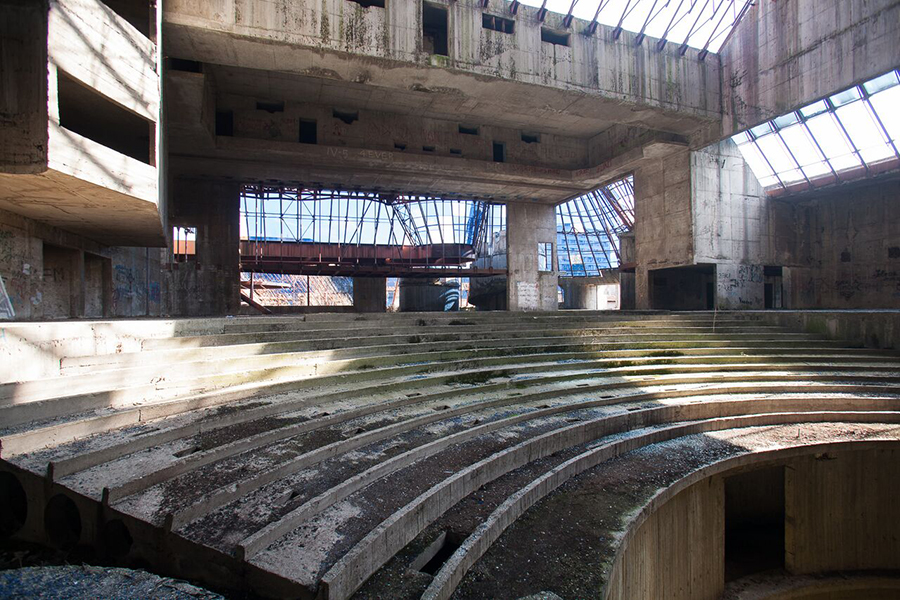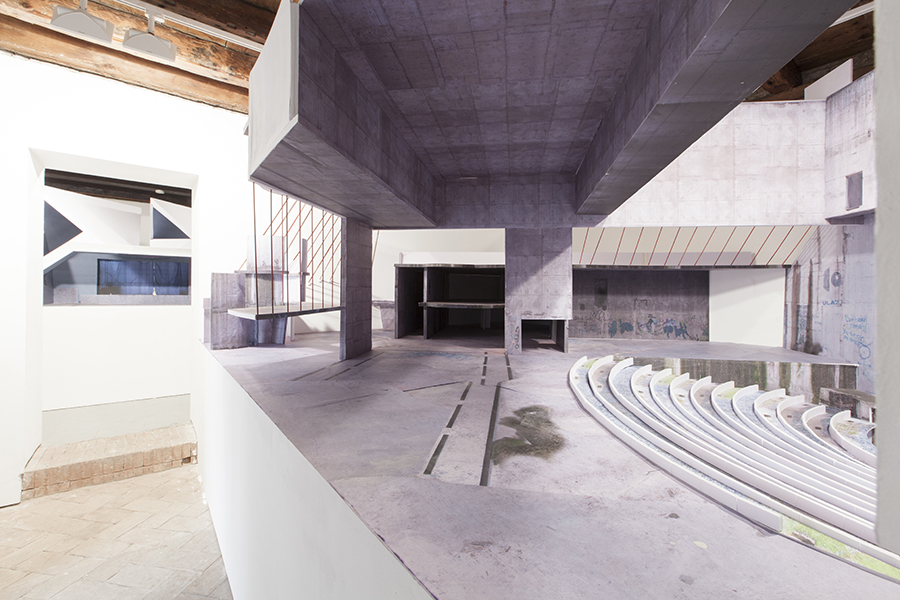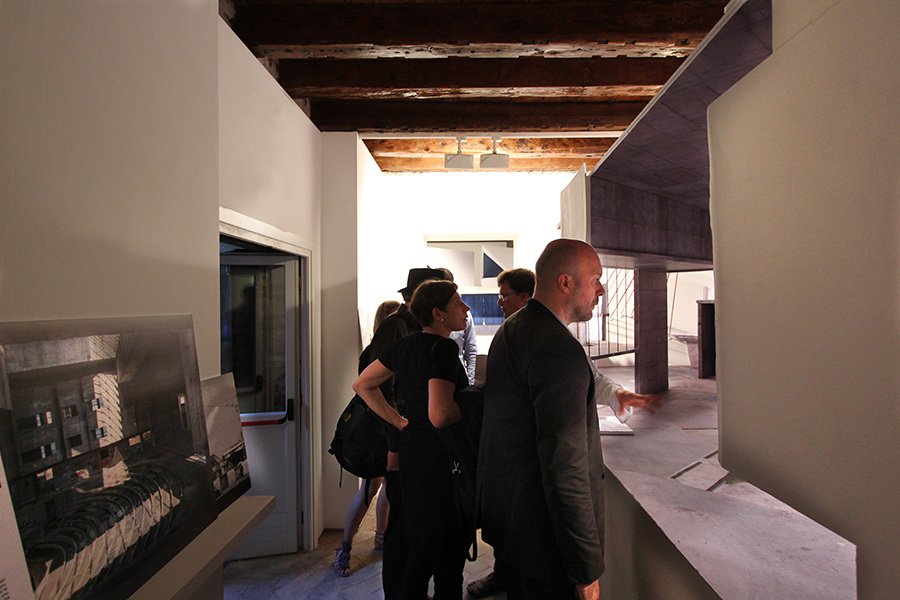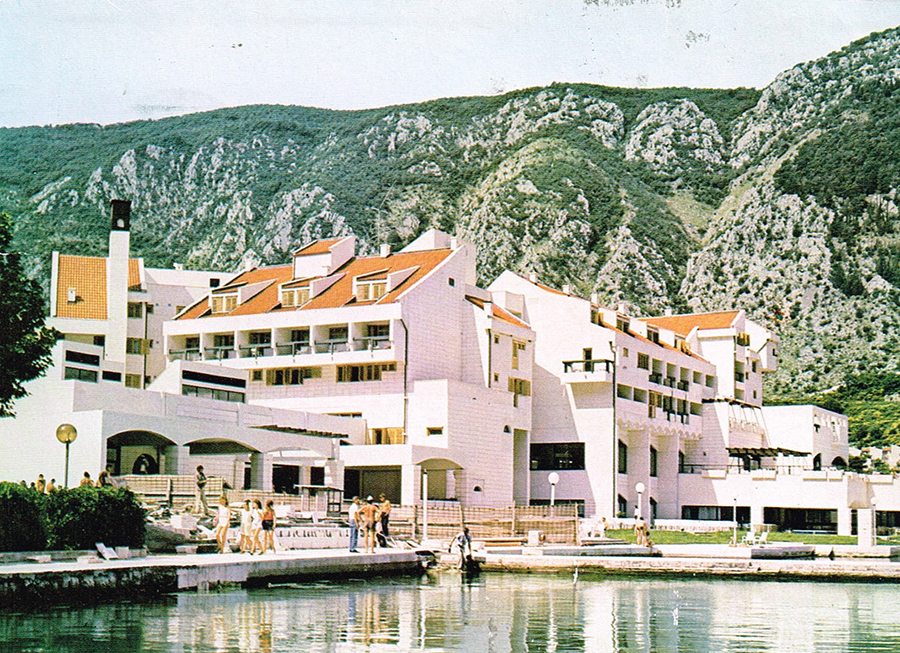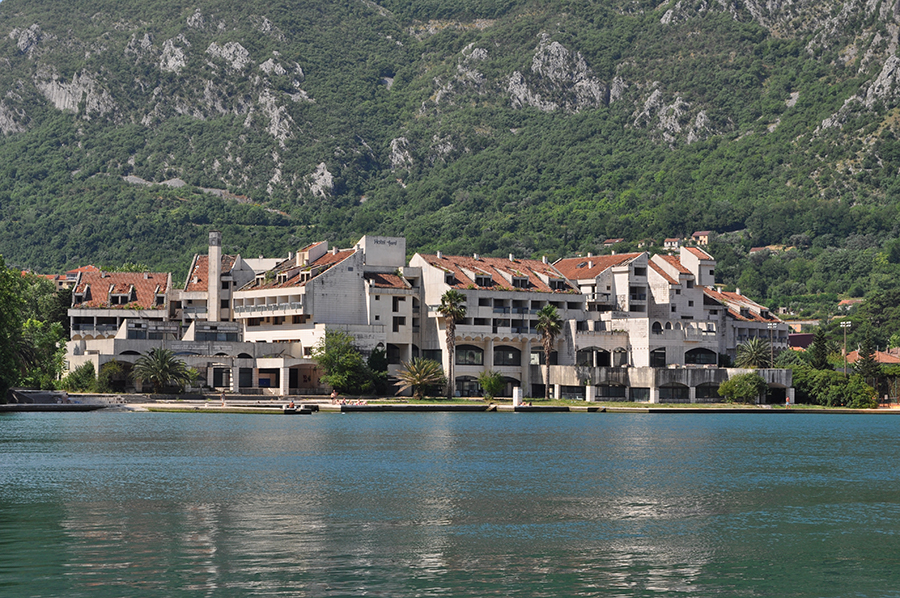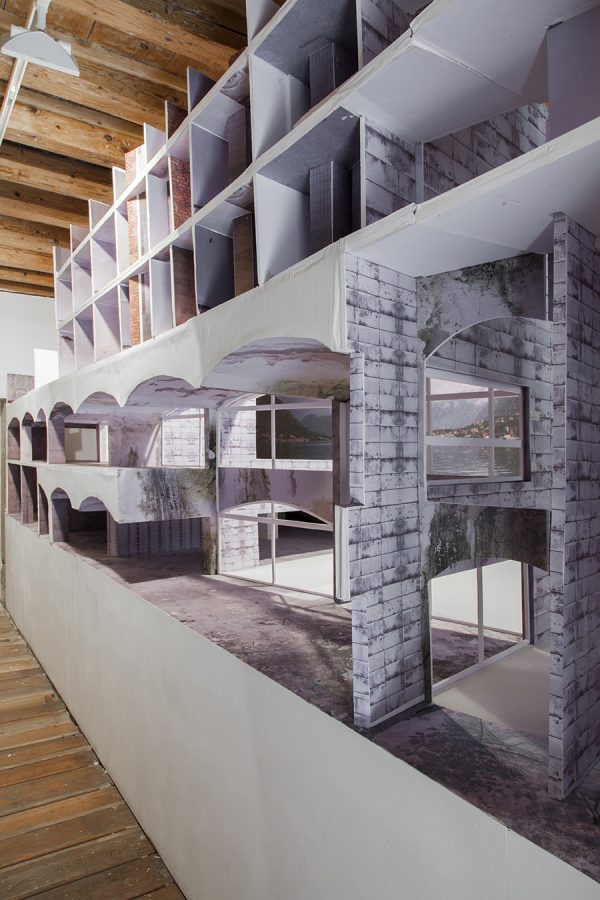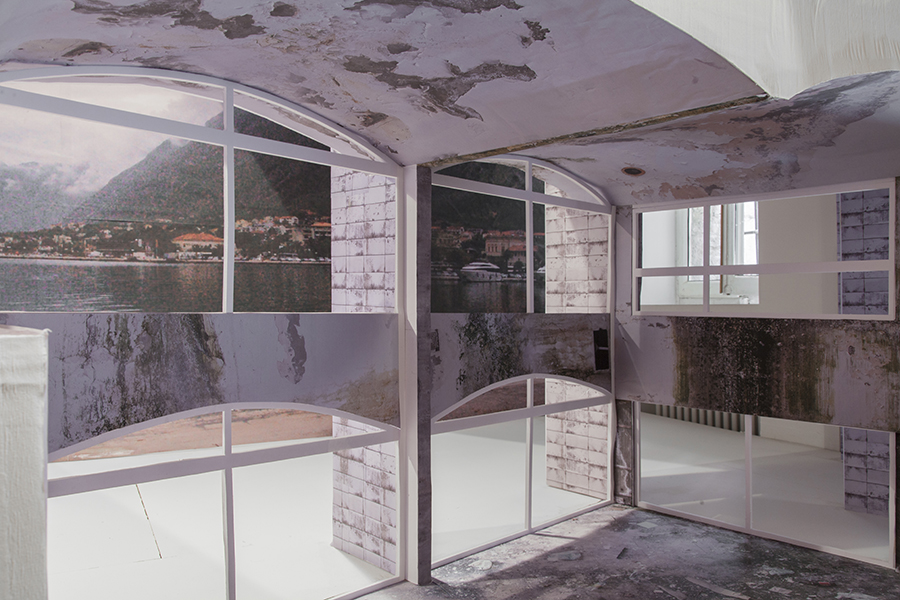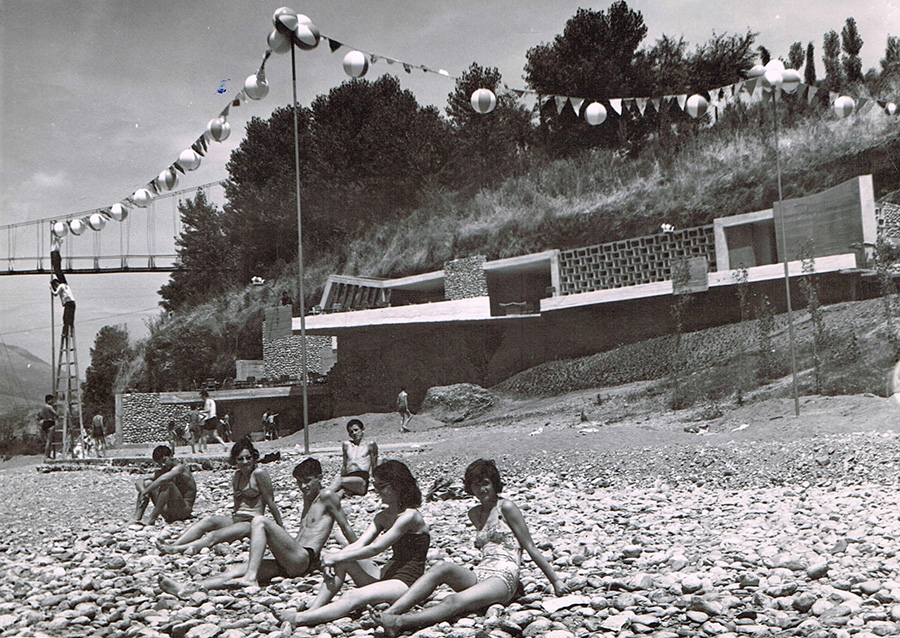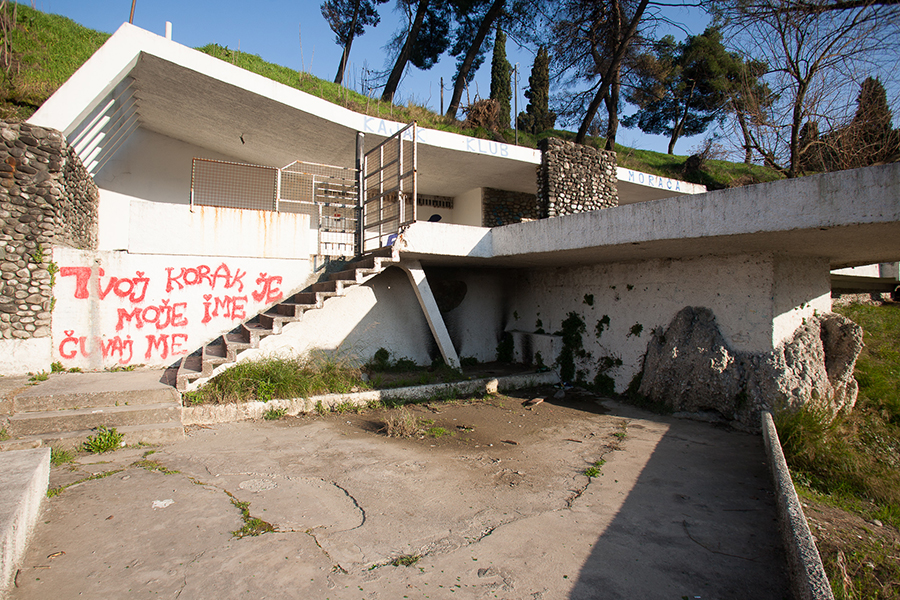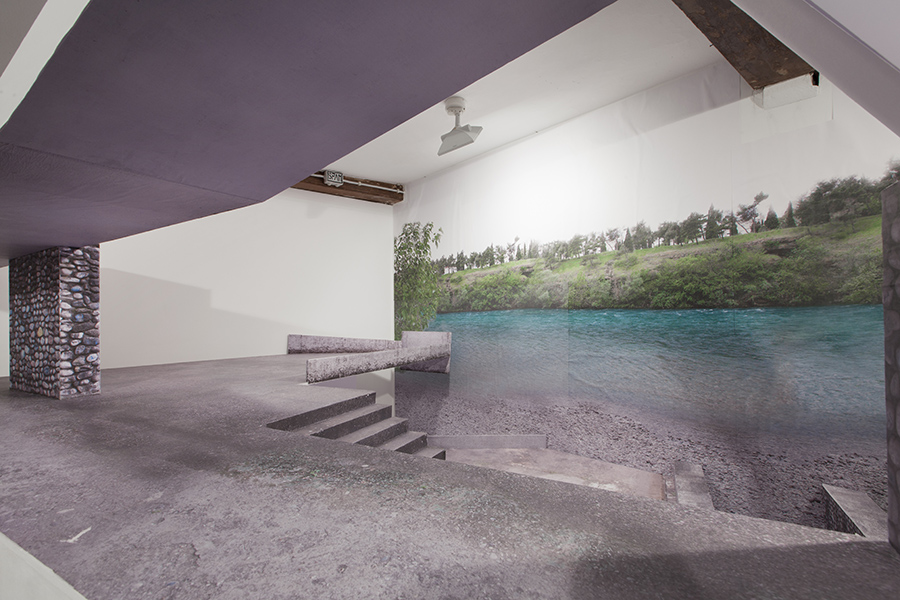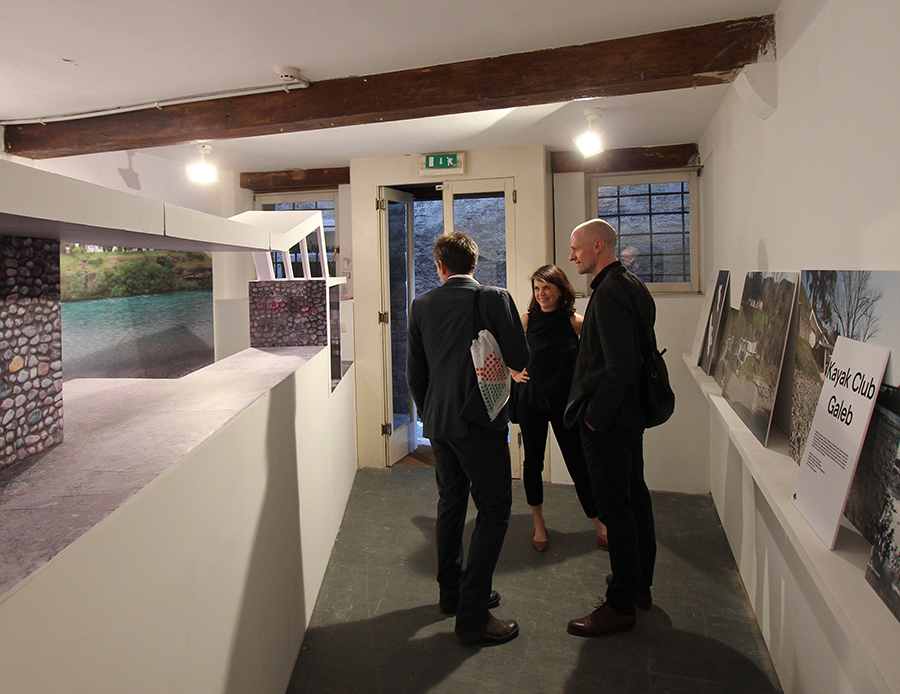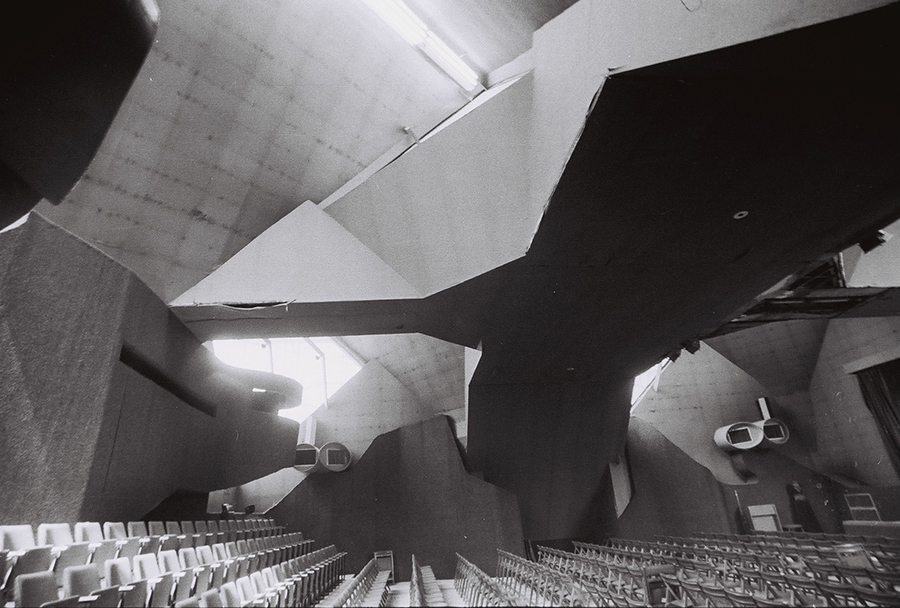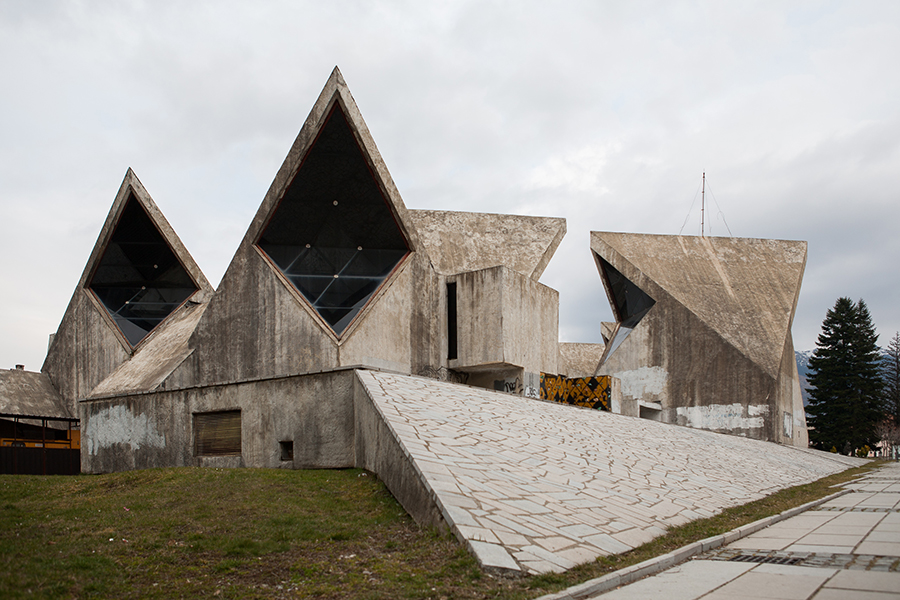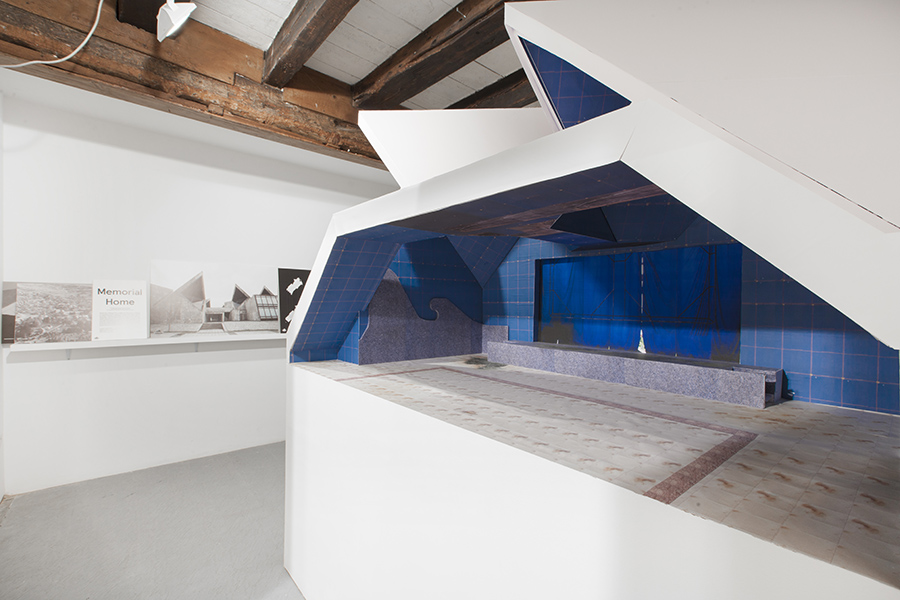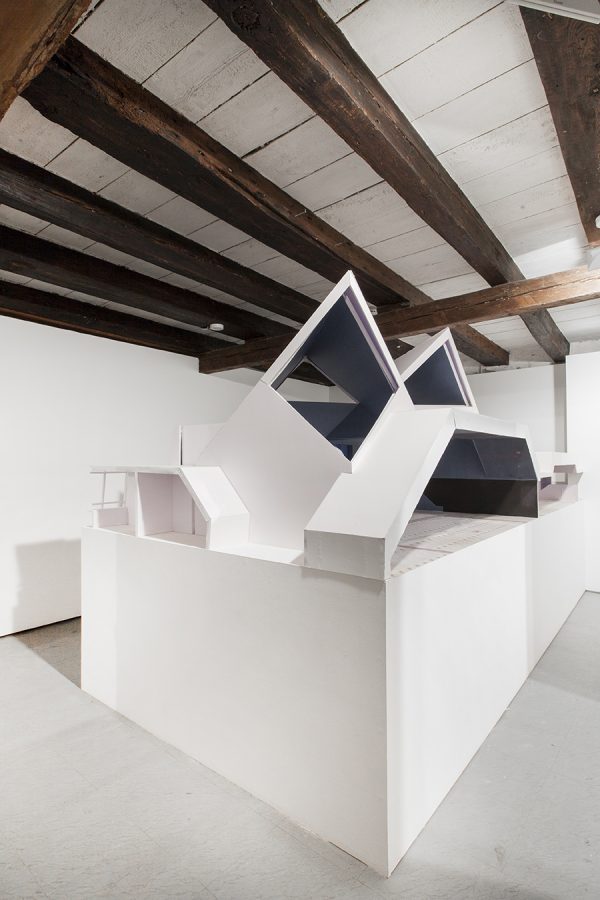Treasures in Disguise
Pavillion of Montenegro at the 14th International Architecture Exhibition – La Biennale di Venezia
co-curated by Ilka & Andreas Ruby, held at Palazzo Malipiero, Venice, 07.06.2014-31.10.2014
The Montenegro Pavilion at the 14th Venice Architecture Biennale presents four examples of late-modernist architecture that were built in Montenegro between 1960 and 1986. When these buildings were first constructed, they radiated their builders’ enthusiasm and confidence about the new society they were building. Only a few decades later, these buildings embody the complete opposite: poorly used (if at all) and maintained (if ever completed), they are a testament to the failure of modernism. Nobody seems to be able to recognize any value in them; hence, their fate seems sealed: decay and demolition.
But how can something that was born out of such collective optimism lose its promise in such a short period of time? Is the demise of these buildings really due to an intrinsic lack of quality, or have we been unable to treat them with enough empathy to find the dormant potential that might be hidden underneath the patina of our own ideological disenchantment with modernism?
It is heart-rending that most of these buildings today do little more than monumentalize the failure of past ideologies. People are partly fascinated by and partly abhor the allure of these modern-day ruins. But the challenge presented by these buildings is more than just esthetic: it’s a question of use. These buildings can and should be reused. That the political narratives that motivated their construction originally have disappeared does not make these buildings irrelevant. On the contrary: the visionary surplus of this architecture, still tangible even in its ruinous state, should make us ask ourselves what visions we might have today for these structures.
There should be no inhibitions, especially no fear of the past and its ideological charges, to discourage contemporary attempts to work with these projects, which may be just as unfinished as the project of modernity itself. Architectural history is filled with examples of buildings that have led multiple lives in different historical periods: the Parthenon, Hagia Sophia, or Diocletian’s Palace, for example. The four buildings presented here—and the many more they stand for as exemplary projects—could develop similarly exciting trajectories if the people of Montenegro were to engage in a public debate over how this architecture can become an incubator for the continued evolution of the cultural, political, and economic landscape of this young country.
Featuring the buildings:
Dom Revolucije by Marko Mušić (Nikšić, Montenegro, 1979-1989, unfinished)
Hotel Fjord by Zlatko Ugljen (Kotor, Montenegro, 1986)
Kayak Club “Galeb” by Vukota Tupa Vukotić (Podgorica, Montenegro, 1960)
Spomen Dom by Marko Mušić (Kolašin, Montenegro,1976)
Curated by: Boštjan Vuga, SADAR+VUGA; Dijana Vučinić, DVARP; Simon Hartmann, HHF Architects; Ilka & Andreas Ruby, Ruby Press; Nebojša Adžić
Art direction and website: Belgrad Creative
Partners: Government of Montenegro—Ministry of Culture & Ministry of Sustainable Development and Tourism
→Visit Treasure in Disguise homepage | tumblr | facebook
→Visit La Biennale di Venezia
→Read a presentation in archdaily
→Download high quality images (you can use them free of charge but they should be credited)

